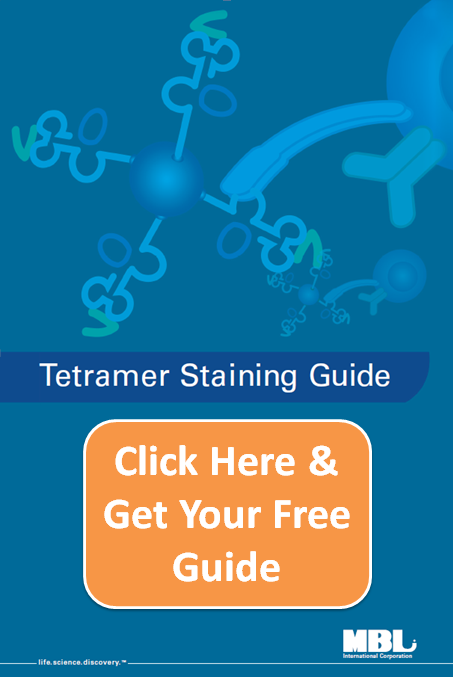Published by Cheryl A. Guyre, Ph.D. on Apr 17, 2015 4:35:17 PM

In the previous Tetramer Tips blog, I suggested ways for you to be a negative Control Freak. Now it’s time to think positive! A positive control for a tetramer is a sample that contains cells expressing the specific T cell receptor of interest, i.e. has the exact specificity of the tetramer. Okay, brace yourselves; I’m going to be frank here. Having a positive control for tetramer experiments is often a quest for the Holy Grail. In many (most, in fact) cases, you will not have access to a positive control, unless one of your experimental samples happens to show a positive result. In an experiment where no positive events are seen and no positive control was used, you cannot necessarily conclude that the donor/patient/mouse is negative for that T cell specificity, because, heck, maybe you got distracted while pipetting and forgot to add the tetramer to your staining cocktail! A tetramer experiment with no positive control and no positives in the experimentals is, therefore, uninterpretable. This is the hard truth we must face.
Before you slip into despair about this, there are ways to obtain or create positive controls:
- Positive control cells for certain specificities are available. A notable example is the OT-I mouse, referenced in the previous tetramer blog on negative controls. Splenocytes, lymph node cells, or blood from this mouse are suitable positive controls for C57BL/6 mice that have been treated or immunized some way to generate a T cell response specific for H-2Kb OVA (SIINFEKL), as the OT-I mouse is transgenic for the T cell receptor that binds specifically to H-2Kb OVA (SIINFEKL).

- Positive control cells can be generated in vitro. The Mixed Lymphocyte-Peptide Culture (MLPC) method uses peptide-stimulation and cytokine culture to induce a specific T cell response. Protocols can be found on pp. 14-15 of the Tetramer Staining Guide.
- Positive control cells can be generated in vivo. Check the literature to determine conditions that lead to a tetramer-specific response in your mouse strain and/or use vaccination conditions from your own experiments that worked previously. Yes, it’s a bit more work, but if you don’t include that control and you get no positive events in your experiments, what do you have? You got it: Uninterpretable data.
- In the course of your tetramer studies, you may find donors or patients reactive to your tetramer of interest. If you find this (and it is ethical, safe, and legal to do so), bleed the heck out of them! Is it your fellow grad student or lab mate? Perhaps she is willing to donate a leukopheresis pack to be used by researchers for years to come. (I believe some vials of my own cells may be in the back of some LN2 freezer at my alma mater. My proud legacy!)
- Some will suggest you use a tetramer of a different specificity that’s positive in a patient population. For example, tetramers to influenza, CMV, or EVB have been recommended as positive controls (in patients known to be reactive) for, say, a tetramer study looking at Mart-1-specific T cells. While this is not ideal, as it is not a tetramer positive control, it will serve as an assay positive control to help you understand if other parts of the assay worked (wash steps, staining buffers, etc.) You still could not conclude for certain that a negative result means the patient lacked Mart-1-specific cells, unless in the same assay a different patient had a positive hit with the Mart-1-specific tetramer.
We researchers are trained and driven to control and predict, which is particularly handy for rare events flow cytometry with tetramers. Just remember to use these skills for good, not evil: when you go home at the end of the day, be sure to leave the Control Freak behind in the lab, planning the next experiment.